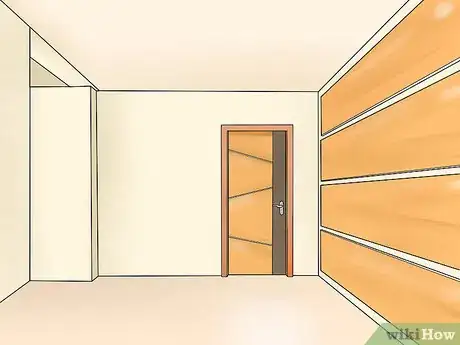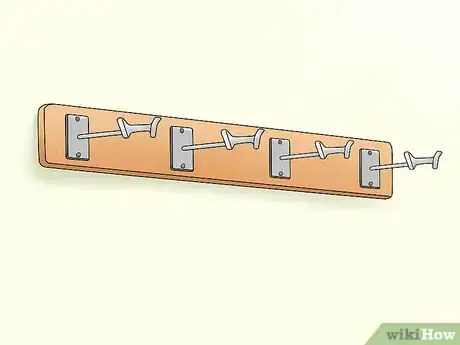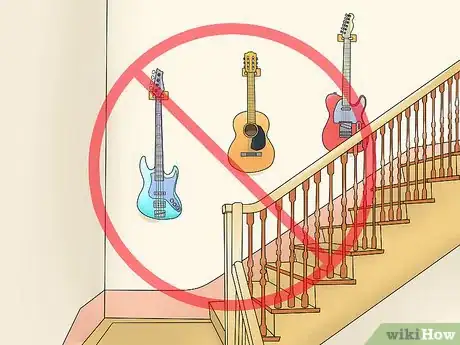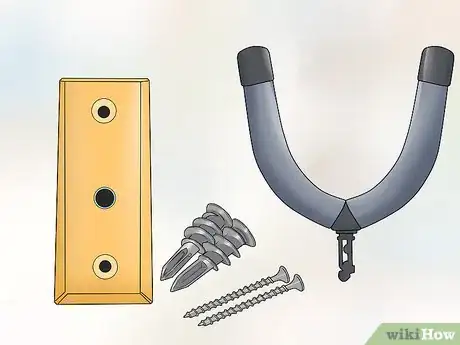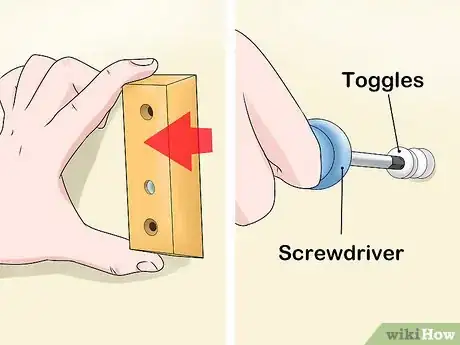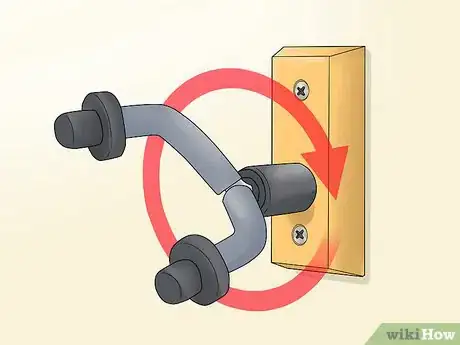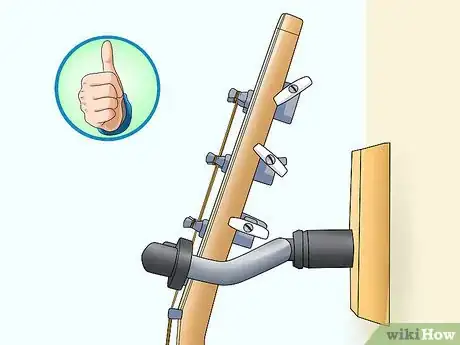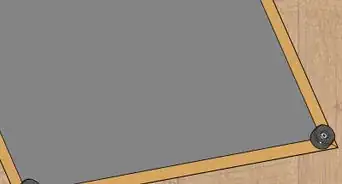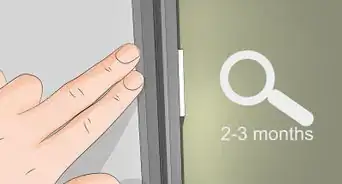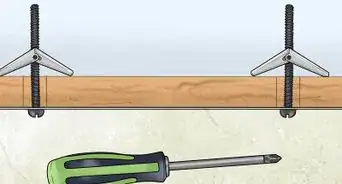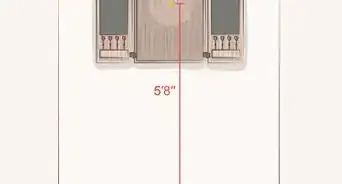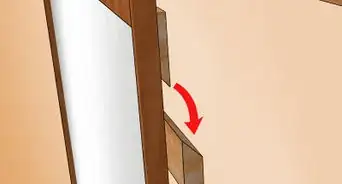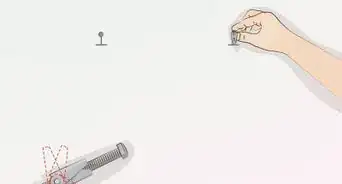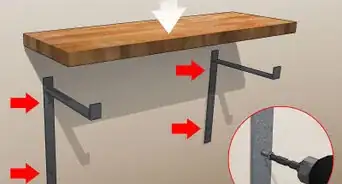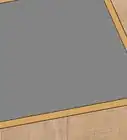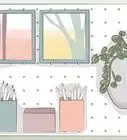This article was co-authored by Jason Phillip. Jason Phillip is a handyman specializing in mounting and hanging objects onto walls. With over five years of experience professionally mounting and installing objects through his company, Jason's Handyman Services, Jason's work includes working with mounting window AC units, designing art gallery walls, installing kitchen cabinets, and replacing light fixtures on drywall, brick, and plaster. He has been rated a "Top Pro" every year since 2016 by Thumbtack for being one of the highest-rated, most popular professionals on Thumbtack.
There are 10 references cited in this article, which can be found at the bottom of the page.
This article has been viewed 32,363 times.
Hanging instruments on a wall is a great way to save space and show off your collection at the same time. The type of mount you use for your instrument depends on whether you play the instrument regularly, or if you just plan on displaying it. Once you have chosen your mount, you need to pay careful attention to placement, both for aesthetic and preservation purposes.
Steps
Choosing the Right Mount
-
1Use simple brackets for instruments you play regularly. While you can always give your guitar a fancier mount, it won't be very convenient if you have to undo a bunch of straps and screws each time you want to play your instrument. Instead, choose simple, padded wall bracket suitable for the type of instrument you have.[1]
- The brackets will typically be labeled based on their instrument, such as: guitar bracket.
- You can find brackets online and in stores that sell musical instruments.
- Consider getting a bracket with padded, flexible arms. Not only will they protect your instrument, but they will be easier to adjust for other types of instruments.
-
2Get a decorative wall mount to suit your room's theme. Wall mounts and brackets for instruments come in all shapes, sizes, and materials. Wooden mounts provide a nice contrast against brass instruments and electric guitars. If you have multiple instruments to hang, consider a mount with multiple brackets.[2]
- Some places sell mounts that are carved into novelty shapes, such as electric guitars or mustangs.
Advertisement -
3Try a floating guitar mount for a minimalistic display. Floating mounts are a set of wall brackets made for guitars. The bottom mount holds the guitar up by the bottom strap screw. The top mount holds the guitar up by the neck or by the top strap screw. You can position them horizontally or diagonally.
- How far apart your screw the mounts into your wall depends on the distance between the 2 strap screws on your guitar.
- You may be able to use these on other types of string instruments, as long as they have screws for the shoulder strap.
-
4Display collectors' instruments in shadow boxes. If you have a valuable instrument, chances are, you are more interested in displaying it than playing it. In this case, purchase a shadow box that fits the dimensions of your instrument. Mount the shadow box on your wall with the instrument inside it. The glass or plastic panel in front of the shadow box will protect your instrument from dust.[3]
- A shadow box is a type of frame, except that it is much thicker. If you cannot find one that you like, you may be able to commission it from a frame shop.
- Most shadow boxes are black inside-out. Consider fitting your shadow box with a colored mat on the inside.
-
5Build a case into your wall for a more refined display. This will involve cutting into the wall and inserting a frame, so it is not recommended for rental units. It is a great option, however, if you don't have a lot of space in your room, or if you don't want things sticking out of the wall that could get easily knocked off.[4]
- Build the case between wall studs. Line the inside of the case with wood.
- Paint the inside of the case to match your wall, or try a different color for contrast.
- Install some lighting inside the case for a more elaborate display.
- Mount a picture frame with the back removed over the case to protect your instrument.
Planning the Layout
-
1Keep your instruments together in a single room. It would be even better if you group them together on 1 wall. This way, if you ever have friends over and musical inspiration strikes, you don't have to go all over your house and hunt down the instruments. Everything will be all in one place![5]
-
2Include a variety instruments if you are collecting from a band. While not absolutely necessary, this is a great way to turn your wall into a sort of museum. If you already have a guitar or two signed by your favorite band, consider getting another instrument that they play signed as well, such as a keyboard or a brass instrument.[6]
-
3Group multiple instruments together in a comprehensive order. This will help make your wall look more organized. For example, if you have a collection of string instruments, hang them in order from smallest to largest. Here are some other ideas:[7]
- Group instruments by type. This includes acoustic versus electric guitars.
- Group instruments by color or wood type.
- Keep different bands separate. This is great if you have different types of instruments from multiple bands.
-
4Choose a location away from sunlight. Even if you keep your instrument behind a glass case, too much sunlight can cause it to deteriorate. Other factors you should take into consideration include temperature and humidity; both should be stable.[8]
- Some instruments require more humidity than others. Ask your instrument's manufacturer about the proper storage conditions.
-
5Keep your instruments away from high-traffic areas. Even if your instrument is slender, such as an electric guitar, it may still be easily knocked off its mount if you place it in a busy location, such as near a doorway or in a hall way. Instead, hang your instruments in an area that receives little foot-traffic.
- Avoid hanging large, bulky instruments in small, tight spaces, even if they are not busy. If you have to suck your breath in to walk past your instrument, it's not a good spot!
Creating a Simple Guitar Mount
-
1Place the mounting block against your wall. A mounting block is a piece of wood, typically sold with guitar wall brackets; it has 3 screw holes. Make sure that the block is high enough on your wall so that the guitar does not touch the floor when you hang it up vertically. Measure your guitar first, if you have to.
- Try to place the mounting block over a stud in the wall. Consider using a stud finder to locate the stud.
-
2Drill holes into the top and bottom screw holes. Do the top screw first, then place a level against the side. Rotate the mounting block until the level's bubble is between the guidelines on the glass tube.[9] Once the bubble is centered, insert the second screw into the bottom screw hole.[10]
- You can use a regular or electric screwdriver for this.
- Use the screws that came with the guitar mount. If you did not get any screws with it, choose screws that are twice the thickness of the mounting block.
- Pay attention to the screws as you drill them in. If you feel the screws hit a wall stud, you are good; if you don't feel a stud, you'll have to insert drywall toggles.
-
3Remove the wall mount and insert drywall toggles, if needed. If you did not hit a stud when drilling in the screws, remove the screws now and pull off the mounting block. Push the drywall toggles into the holes already in the wall, then screw them in the rest of the way. [11]
- Once you have the toggles in, replace the mounting block and reinsert the screws.
- Check the label on the drywall toggles' packaging. Some have a limited weight capacity.
-
4Screw the guitar bracket into the center hole. Take the padded Y-shaped bracket. Find the screw at the end, and insert it into the center hole on the mounting block. Rotate the bracket until it is screwed in tightly. Make sure that the arms are pointing upward.[12]
-
5Hang your guitar on the bracket. Lift your guitar up, and slide it into the bracket. The arms should hold the guitar up by the neck, just below the headstock. If the arms on the bracket are too wide or too narrow, you may be able to pull them closer together or further apart.
Things You'll Need
- Wall mounts or brackets
- Screws
- Screwdriver
Creating a Simple Guitar Mount
- Guitar wall mount (mounting block and bracket)
- Screws
- Drywall toggles (if needed)
- Level
- Screwdriver
References
- ↑ https://ilevel.biz/how-to-hang-instruments-on-a-wall/
- ↑ https://makespace.com/blog/posts/music-instrument-equipment-storage/
- ↑ https://ilevel.biz/how-to-hang-instruments-on-a-wall/
- ↑ http://www.mydomaine.com/musical-instrument-decor/slide5
- ↑ http://www.mydomaine.com/musical-instrument-decor/slide5
- ↑ http://www.mydomaine.com/musical-instrument-decor
- ↑ http://www.mydomaine.com/musical-instrument-decor/slide2
- ↑ https://www.youtube.com/watch?v=pQCpWdr6olI&feature=youtu.be&t=16s
- ↑ Jason Phillip. Handyman. Expert Interview. 2 July 2020.

